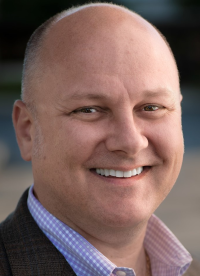Agenda |
|
8:15 - 9:15 am
Registration and Welcome Coffee
9:15 - 9:45 am
Opening Keynote Address

9:45 - 11:00 am
Grid Modernization: What is Holding Us Back?
A recent report by the National Conference of State Legislatures shared an eye-opening statistic: "60% of the U.S. distribution lines have surpassed their 50-year life expectancy and it is estimated that $1.5 to $2 trillion will be spent by 2030 to modernize the grid just to maintain reliability". Utilities and regulators are between rock and a hard place as they try to balance the needs to modernize the grid and ever-increasing affordability concerns. In this panel, we will hear perspectives on how to move forward more quickly on the grid modernization investments and ways to make this transition palatable for utilities, regulators and customers.


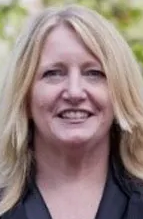
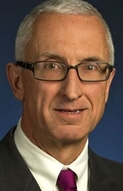
Mark McGranaghan
Vice President, Power Delivery and Utilization
Electric Power Research Institute (EPRI)
profile
Vice President, Power Delivery and Utilization
Electric Power Research Institute (EPRI)
profile
11:00 - 11:30 am
Networking Coffee Break
11:30 - 12:00 pm
Achieving Grid Edge Operations Flexibility via Non-Wires Alternatives
Distribution system planners and operators are facing more challenges today than ever before. Maintaining reliable power delivery on a least-cost basis now means managing distributed generation interconnections as well as electrification of both personal vehicles and fleets. Many of these challenges can trigger capital upgrades which are not just costly, but logistically challenging. This presentation will discuss some of the challenges at the grid edge, both from a planning and from a operational perspective, and some of the non-wires technology options for managing these challenges.
- What is typical visibility of the grid edge, and what data is currently being used for distribution planning?
- What planning challenges exist when trying to evaluate non-wires alternative technologies?
- What are the operational limitations of different non-wires alternatives technologies?

12:00 - 1:00 pm PDT
Lunch Break
1:00 - 2:15 pm
Serving the Energy Consumer - Current Behaviors, Preferences and Requirements
In this session, we will provide a high-level overview of residential energy customers in the United States and their interests, concerns, motivations and behaviors around energy. Using the Smart Energy Consumer Collaborative's nationally representative customer research as a starting place for discussion, we will specifically examine interest in electric vehicles and smart home devices, the needs of renters and lower-income consumers, consumer concerns and interests around their energy data and more. Finally, we will also highlight programs from electricity providers that have successfully educated and/or engaged consumers in the time of COVID-19.




2:15 - 2:45 pm
Networking Coffee Break
2:45 - 3:15 pm
Renewables and the Grid: Friends - Not Enemies - When Managed Collaboratively
Renewable resources on the distribution grid have long been viewed as having a negative impact, but that assumption is being challenged by today's innovative utilities. With grid modeling powered by rich data and active control, renewable generation - especially utility-scale renewable generation - can play a positive role in supporting the grid. Combining fast and robust data communication, collaborative management, and communication between smart inverters and the grid, renewable generation - including distributed energy resources (DER) - can be utilized to improve grid reliability, stability, and power quality.
This session will share perspectives on DER management and data analytics, and what we've learned in helping utilities pioneer the creation of a grid in harmony with distributed generation.
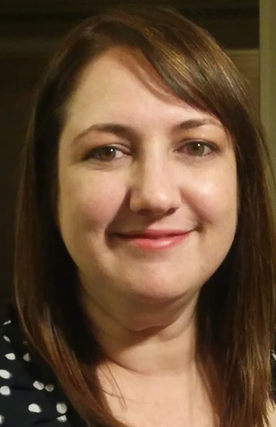
3:15 - 3:45 pm
Strategies for Achieving Sustainability Targets While Optimizing Generation and Improving Revenues
Considering changing energy market dynamics as well as increased penetration of renewable energy assets to the electric grid, power producers may increasingly rely on sophisticated energy management software to achieve sustainability targets, while optimizing generation and improving revenues.
This session will examine case studies, including a recently commissioned 40 MW / 80 MWh solar-plus-storage facility in Georgia, that use energy management software and machine learning for value-based asset management. We will also discuss what mainland grid systems can learn from island grids. For example, on the island of Graciosa, Wärtsilä introduced a 6 MW / 3.2 MWh energy storage system and smart energy management software. The result was reduced local grid reliance on imported fuel and lower greenhouse gas emissions by boosting renewable energy penetration from 15% to 65%.
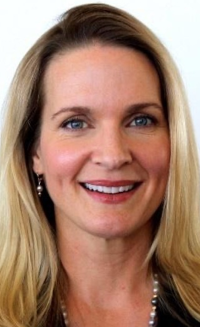
3:45 - 4:15 pm
Next Generation Distribution Management Systems
No portion of the power grid has been impacted more by grid modernization than the electric distribution system. The grid is transforming from a more centralized generation system to one with a significant portion of demand supplied by distributed energy resources (DERs) and the use of microgrids for enhanced grid resiliency. The next generation distribution management system will need to incorporate more intelligence and advanced functionality to support these changes in the operation, monitoring and control of the future distribution grid.
One part of ADMS (Advanced Distribution Management System) functionality that currently lacks adequate consideration is modelling and management of DERs. A standalone DERMS provides services for managing grid level events but is not suitable for managing localized distribution system operating problems and optimizing the reliability, efficiency, and performance of individual substations and feeders. The latter capability is primarily the responsibility of the ADMS. This session will compare the functionality of a standalone DERMS with an ADMS and discuss a proposed approach to accomplish the DER-Enabled ADMS.
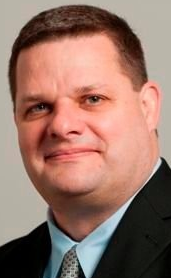
4:15 - 4:45 pm
Modernizing the Grid: Practical Implementations
Implementing Grid Modernization solutions brings both opportunities and challenges: obtaining new insights to improve resiliency and reliability means looking at the grid in entirely new ways, whereas traditional monitoring techniques have produced minimal gains, taking years to implement, and at great cost, and risk. Emerging technologies are now available which provide enhanced visibility into grid resiliency and reliability, enabling insights that were never before attainable, paving the way for step-change improvement, sustainable for both grid and DER applications. Deploying this advanced technology across the grid, with practical implementations, includes:
Technologies:
- Intelligent Edge Devices -- Each processing over 30 billion samples/day, discerning what is normal and what is not
- Pattern Recognition -- Anomalous conditions leading up to failure, used as a basis for Machine Learning (ML) engines
- AI and Predictive Analytics -- Applying machine learning feedback loops to make edge devices smarter
- Wildfire Mitigation Projects -- Using new visibility to pinpoint source of wildfires
- Asset Monitoring -- Using Condition-Based Maintenance to reduce O&M costs
- Renewable Integration -- Minimizing distortion at Interconnect points
- Grid Modernization -- Achieving new insights through new visibility
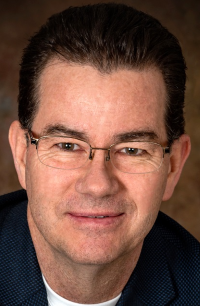
4:45 - 5:45 pm
Drink Reception
8:15 - 9:15 am
Morning Coffee
9:15 - 10:30 am
Long-Duration Energy Storage: Technology Advances and Business Models
While shorter duration storage is currently being installed to support today's level of renewable energy generation, longer duration storage technologies are needed as more renewables are deployed on the grid. Long-duration technology can output stored energy at full capacity for longer than four hours -- the typical length of storage for lithium-ion batteries. Cheaper and more efficient storage will make it easier to capture and store renewable clean energy for use when energy generation is unavailable or lower than demand.
This session will examine key advances in the long-duration energy storage space, including large-scale advanced compressed air energy storage, geomechanical pumped storage, and thermodynamic compressed C02 storage above ground. Enabling technologies as well as business models for each will be examined.


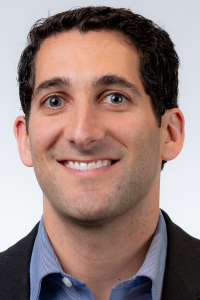
10:30 - 11:00 am
Networking Coffee Break
11:00 - 12:30 pm
Smart Building Electrification and the Next-Gen Grid
Strategies to reduce GHG emissions are being explored and adopted by an increasing number of sectors and industries. Many entities are looking to electrification to replace carbon based fuel sources. The building sector could make a huge impact on GHG reduction with a move toward electrification. Electrification of buildings, in particular, formerly carbon based fuel space heating, will greatly increase the demand on the electric grid. This panel looks at the technologies which may be relied on to increase building electrification. Here we discuss strategies and innovations with companies involved in electrification in commercial, single and multi-family residential sectors. We get input from companies:
- Engaged in building electrification pilots with utilities
- Advancing cold climate heat pump technologies
- Working to bring heat pumps to subsidized or lower income housing
- Introducing advances in magnetocaloric and magnetic induction heating
- The view from utilities regarding the move toward building electrification




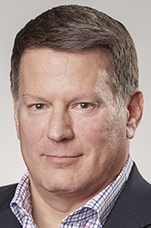
12:30 - 1:30 pm PDT
Lunch Break
1:30 - 3:00 pm
EV Charging, Microgrids and Demand Response: Building the Grid of the Future
The global electric vehicle charging infrastructure market is expected to reach USD 8,037.12 million in 2021, at a CAGR 39.67% to reach USD 46,021.15 million by 2026. Therefore regulators, government authorities, utility providers, charge network operators and technology providers must work together to support the transition into EVs.
In this session, we will discuss experiences and strategies in building a smart charging infrastructure that will ensure the vehicle-to-grid connection is resilient, reliable, and ready to take the needs of the future customer. We will also be examining the linkage between microgrids and integrating electric vehicles, and the technologies required to facilitate the transition. Topics to be addressed include:
- Grid services and demand response programs needed to manage EV charging loads
- Unlocking EV charging as a flexible energy user class and ensure a reliable energy supply
- Delivering a driver-centric managed charging experience
- Initiatives, plans and policies that leading organizations have taken to electrify mobility
- How to scale up an existing charging networking to meet future demand
- The role utilities play in ramping up charging infrastructure and the challenges they will face
- Different business models that are making electric vehicle infrastructure and microgrids accessible

